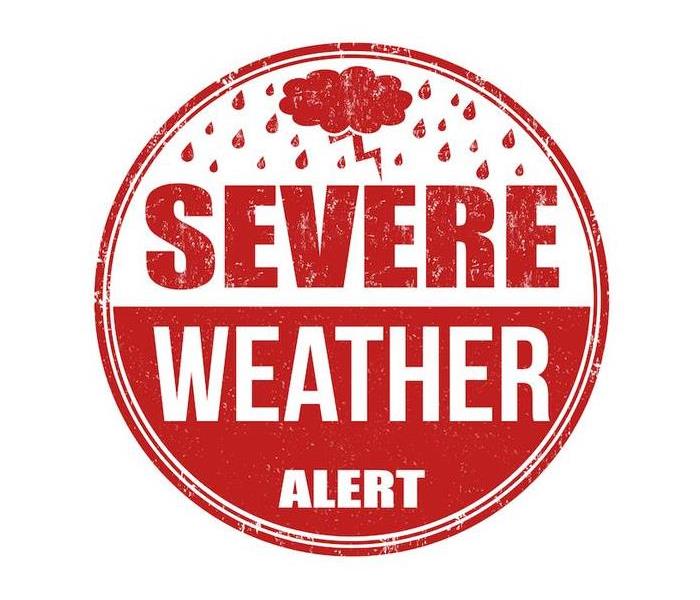Stay Safe During Storms By Following Local Alerts | SERVPRO® of North Lilburn
7/14/2022 (Permalink)
Our national weather service utilizes 42 different kinds of weather alerts, divided into seven distinct categories. This amount of information can be overwhelming for the average person, especially while you’re battening down the hatches for a potentially dangerous storm!
By understanding the difference between a warning, advisory and other alerts, you can spend less time trying to interpret the alert and more time getting ready for what’s coming. In addition, you can take steps to protect your home and property from storms before they arrive.
Everyone should have a foundation of knowledge about weather and the risks that every event can inflict. However, it’s most important to be aware of the weather that’s most likely to impact us here in Lilburn.
Before discussing what each alert means, we should talk about how they are used. A weather forecast is merely a prediction as we all know, so what tells us how severe, the specific locations and duration of a storm is? Well, that’s complicated, but there are multiple factors that can affect this.
The National Weather Service is responsible for weather forecasting and consequently issuing any necessary warnings. The NWS headquarters receives data from six regional offices, along with hundreds of sub-offices that can do highly localized predictions and alerts. We are covered by the Southern Region headquarters.
The NWS employs scientists, astronomers and meteorologists who work as a collective to gather data and create forecasts for each region. These men and women use information from satellite radars, weather tower sensors, ocean currents, and solar flare activity from the sun.
All of this data allows the National Weather Service to make fairly accurate predictions that can and do save lives each year.
The most basic knowledge that everyone should have is the key differences between “watches” and “warnings” for any kind of weather event. These terms are used frequently with thunderstorms, tornadoes and flooding.
When a watch is issued, this is a sign to start prepping for the incoming storm. These alerts mean that a storm could potentially be dangerous to people in your area. Watches will typically cover multiple counties, as they want everyone in the region to be ready for a disaster.
A warning is issued in smaller zones that may cover a single city or county. These alerts are red flags, meaning that danger is on its way, and you should take immediate measures to protect your home and family.
You should also be aware of the weather that we commonly see here in Georgia, and Lilburn specifically. Because of the mountainous region, storms seem to drop in from the sky and collect for days and weeks at a time. We see flooding frequently in this area because of how our geography flows rainwater right through our cities when the creeks overflow.
Obviously, knowing what weather alerts mean is the best way to stay safe from severe weather. But there are a few things that you can do to mitigate the damage dealt to your home and property.
Clearing your gutters and securing your outdoor furniture are two very simple tasks you can complete before a storm arrives to help prevent flooding or destruction from debris.
It’s also a smart idea to create a safe zone inside your home with nonperishable food, water and an emergency exit plan for your family if things turn south.
Once the storm has passed, take pictures of any damage that your home may have suffered, and call us at SERVPRO of North Lilburn right away. We are proud to offer 24⁄7 availability so that we can be there to begin your restoration process immediately.
As you learn more about the weather we see in this community, the better prepared you can be for severe events. Learn what the commonly issued alerts for our community mean so that you can choose the next course of action to stay safe and keep your home standing.
Experienced storm damage to your home or property? Contact us today for a quick response!




 24/7 Emergency Service
24/7 Emergency Service
